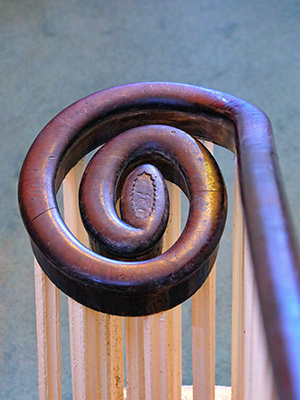MONALTY HOUSE
Published in Gems of Architecture, Issue 1 (January/February 2022), Volume 30CARRICKMACROSS, CO. MONAGHAN
By Damian Murphy
Monalty House is set within a drumlin landscape two miles south of the market town of Carrickmacross, Co. Monaghan. It is the second house to occupy the site. Evidence of the first, ‘a very good Lime & Stone wall house with a small Orchard’, survives in the form of a survey commissioned in 1735 by Viscount Weymouth of his estate in the barony of Farney, where it is shown as a single-storey house approached by a tree-lined avenue. Only the course of the avenue was retained when the site was cleared to make way for a new house.

Above: Monalty House, an archetypal Georgian country house, substantial but understated. (Pat Byrne)
The identity of the architect of Monalty House is not known. Neither is the exact date of construction, but it is believed to date from the middle of the eighteenth century. This is consistent with a series of events which saw the original tenant, William Barton Tenison (1743–1818), accrue such rent arrears that Norman Steele (1753–1801), agent to the Bath estate, executed a writ of habere facias possessionem in 1785 and took over the interest in the property. The annotated Map of the Barony of Farney (1790–3) by William McCrea names Monelty [sic] as the residence of ‘N. Steel Esqr.’.

Above: The spiral scroll or volute on the staircase’s handrail resembles an eye with a scalloped pupil at its centre. (Pat Byrne)
Monalty House is in many respects the archetypal Georgian country house, three storeys over a half-basement, substantial but understated, and largely dependent on proportion and symmetry for architectural effect. The central door-case is a testament to the skill of its maker, the finely chiselled limestone decorated with fluting and low-relief rosettes which retain a crisp intricacy to this day. The multi-panelled door is crowned by a spectacular petal fanlight with a collar of starlets around the hub and a margin of circlets. It is protected by a spiked wrought-iron guard, a rare survivor, and the sidelights are similarly protected with wrought-iron uprights visible behind the oval and quarry glazing bars.
The interior, much like the exterior, is an exercise in elegant restraint but is not without interest or curious idiosyncrasies. The staircase occupying the rear of the tripartite plan is functional, at first glance unremarkable, but its timber handrail finishes in a volute which, eschewing the predictable monkey tail, is slightly lozenge-shaped and resembles an eye with a scalloped pupil at its centre. The plasterwork is generally plain with the exception of the reception rooms, where the ceiling roses are formed of life-like feathers.
Monalty House was subsequently the home of the distiller Thomas McEvoy Gartlan (1800–86), who in April 1843 hosted Daniel O’Connell (1775–1847) on the eve of a monster meeting held in Carrickmacross to muster support for the repeal of the Act of Union. It almost knew a period of reinvention when it was purchased in 1928 by the Monaghan County Board of Health and Public Assistance for adaptation as a hospital but, those plans coming to naught, it returned to residential use in 1931. Its owners, the Hughes family, are immensely proud of their role as custodians of this lesser-known gem of the architectural heritage of County Monaghan.
Damian Murphy. Series based on the NIAH’s ‘building of the month’, www.buildingsofireland.com.
















